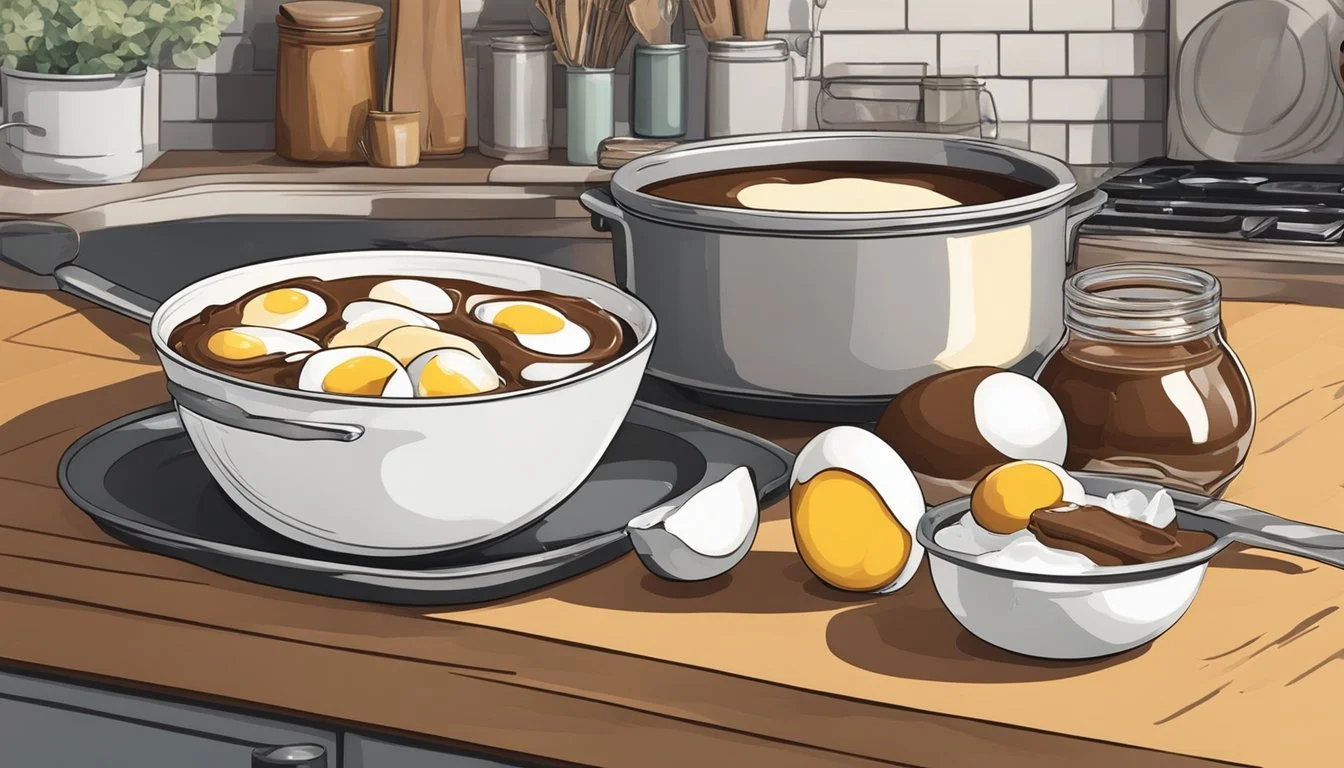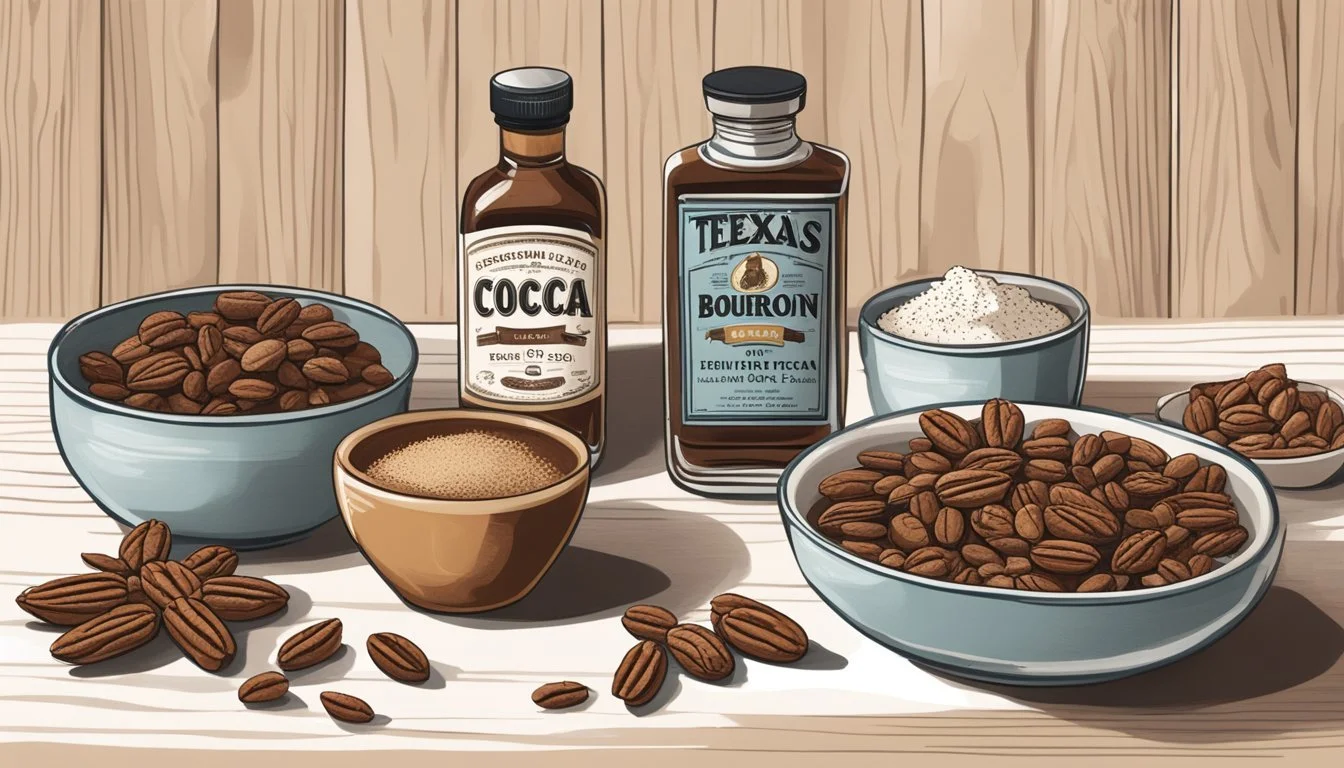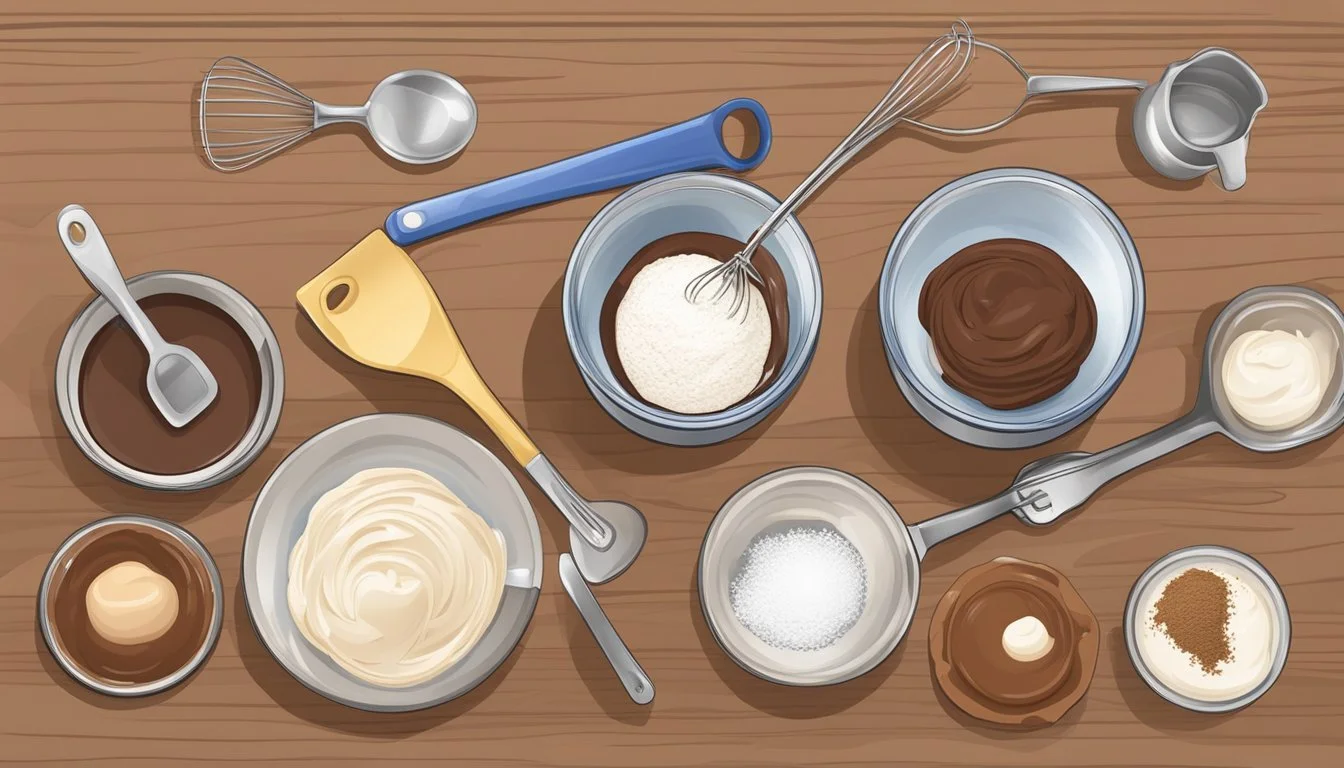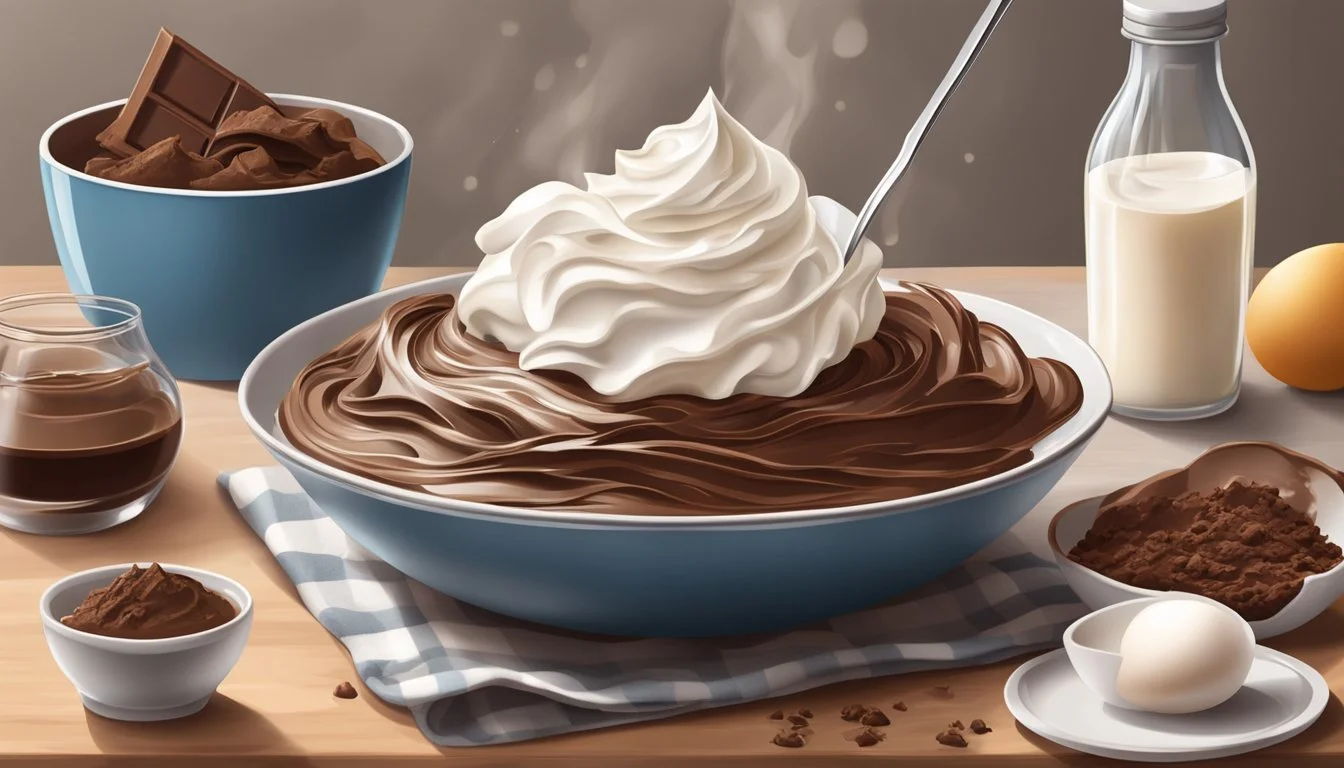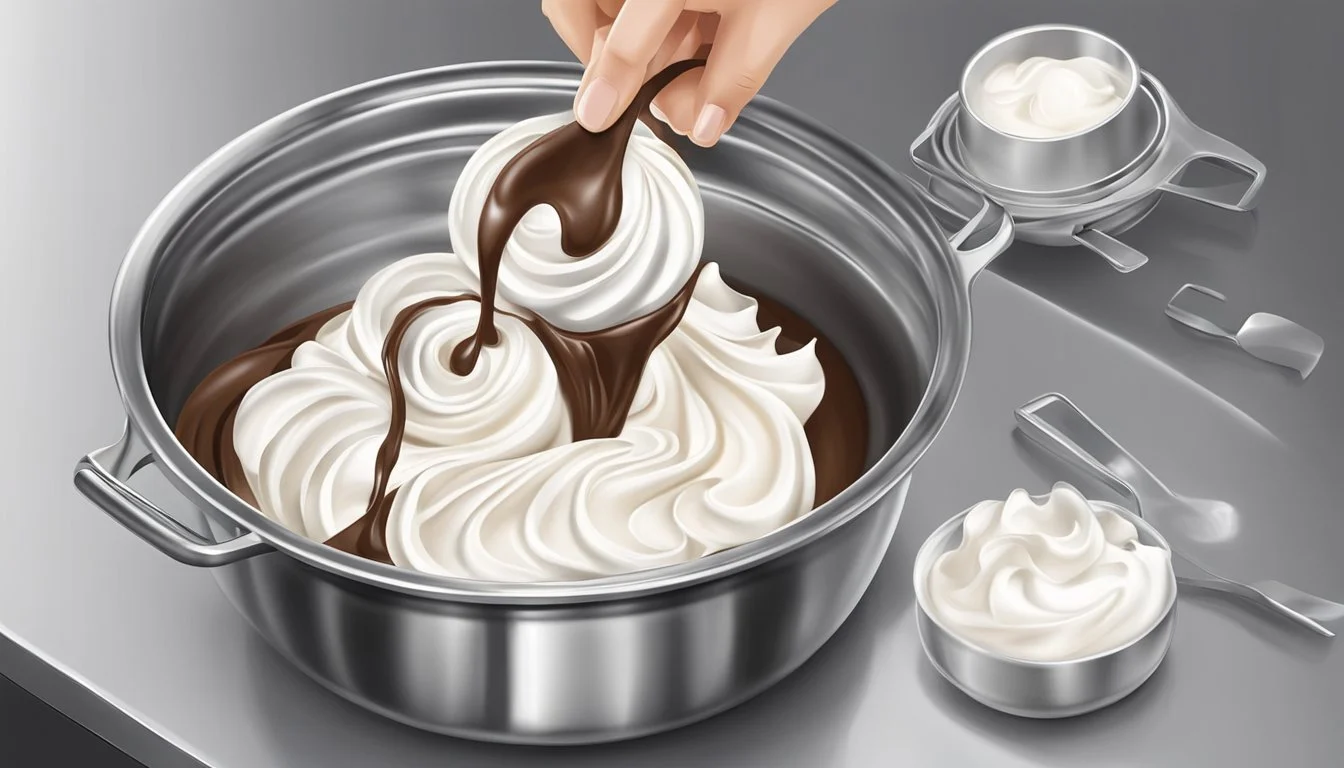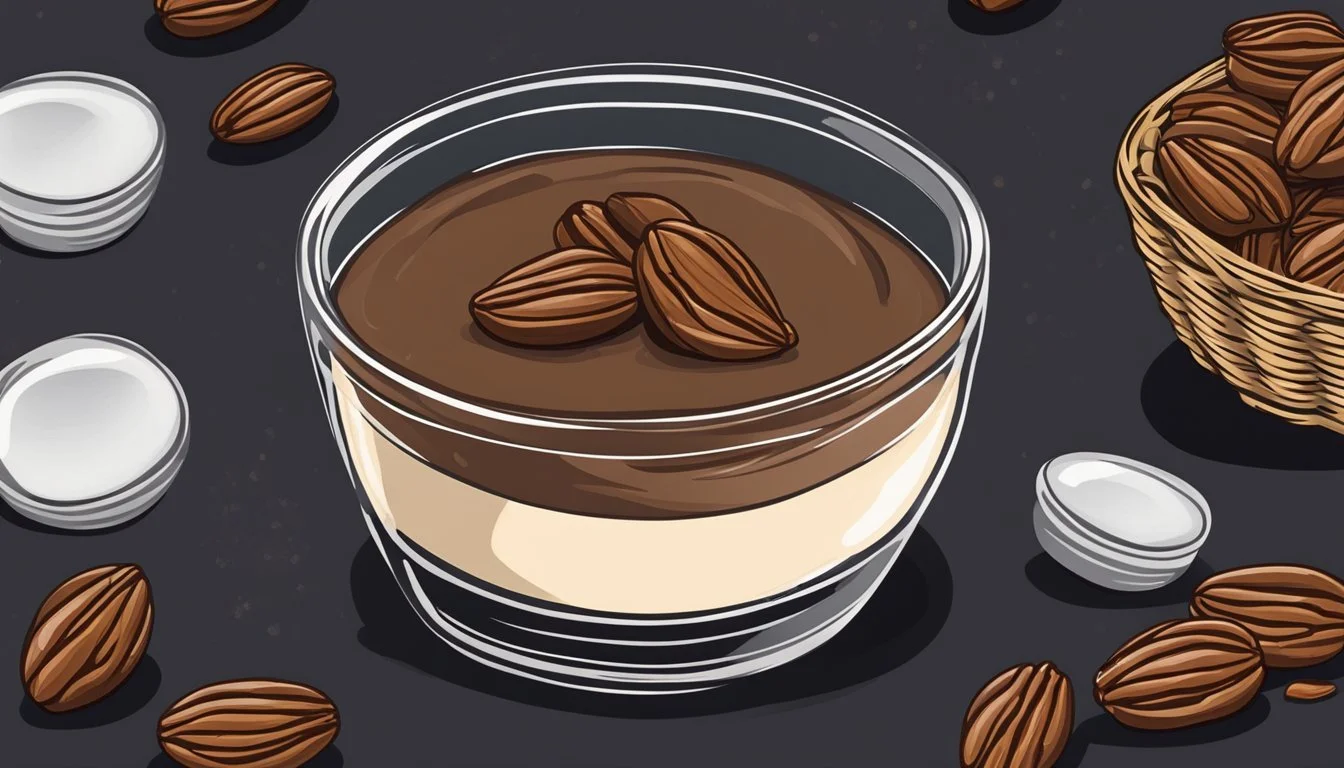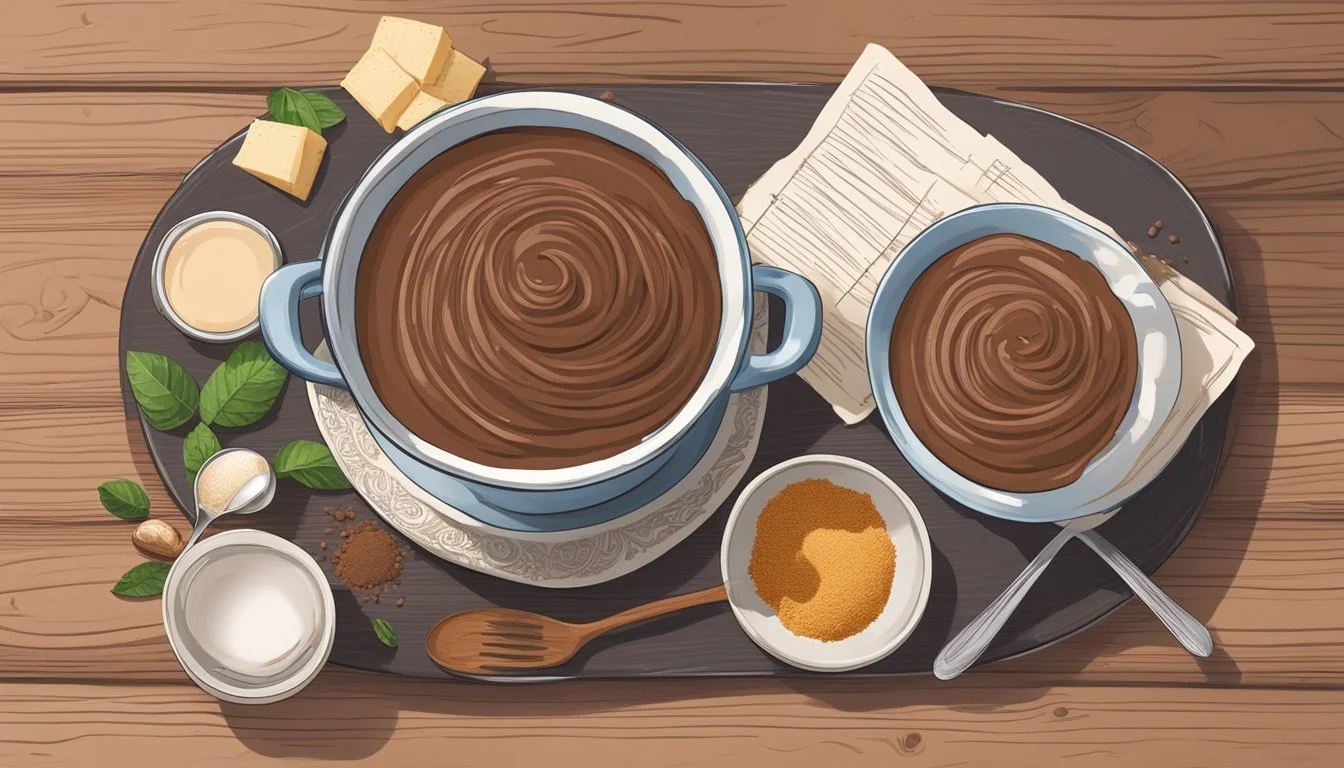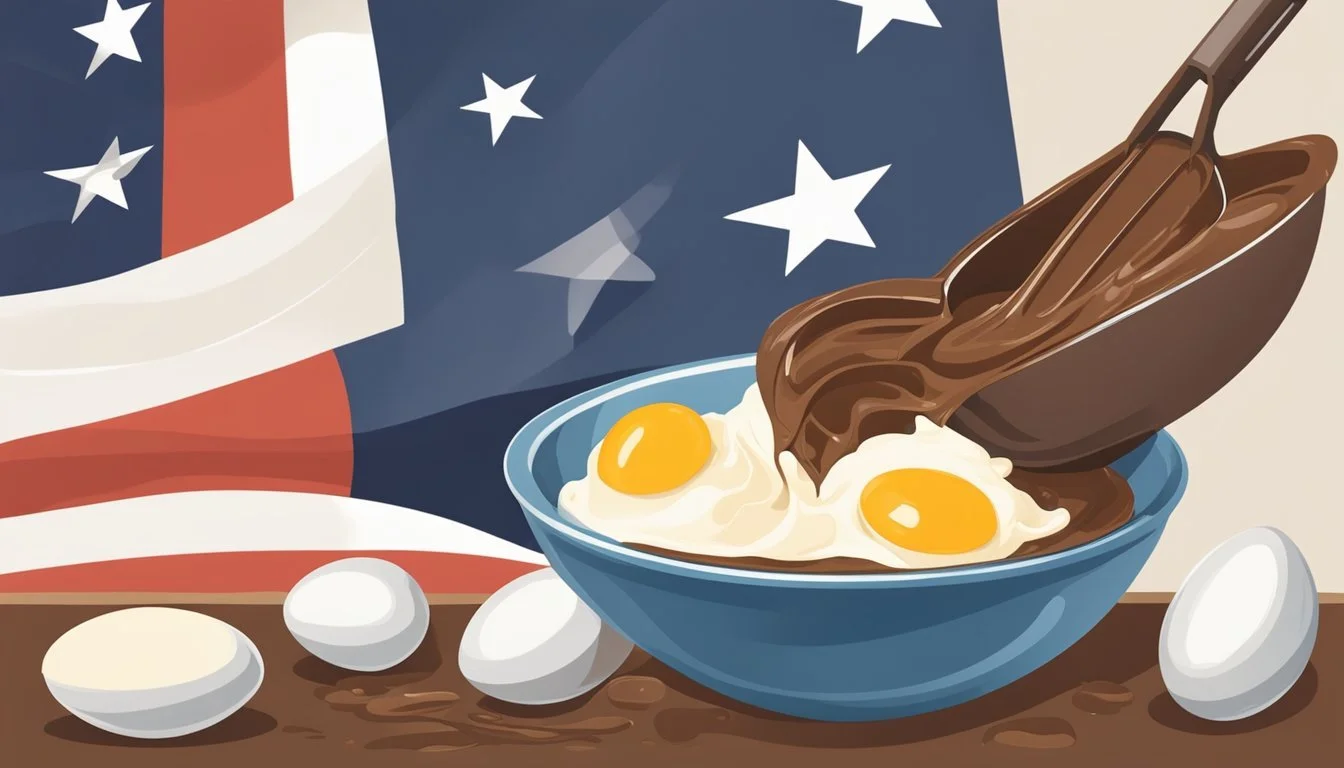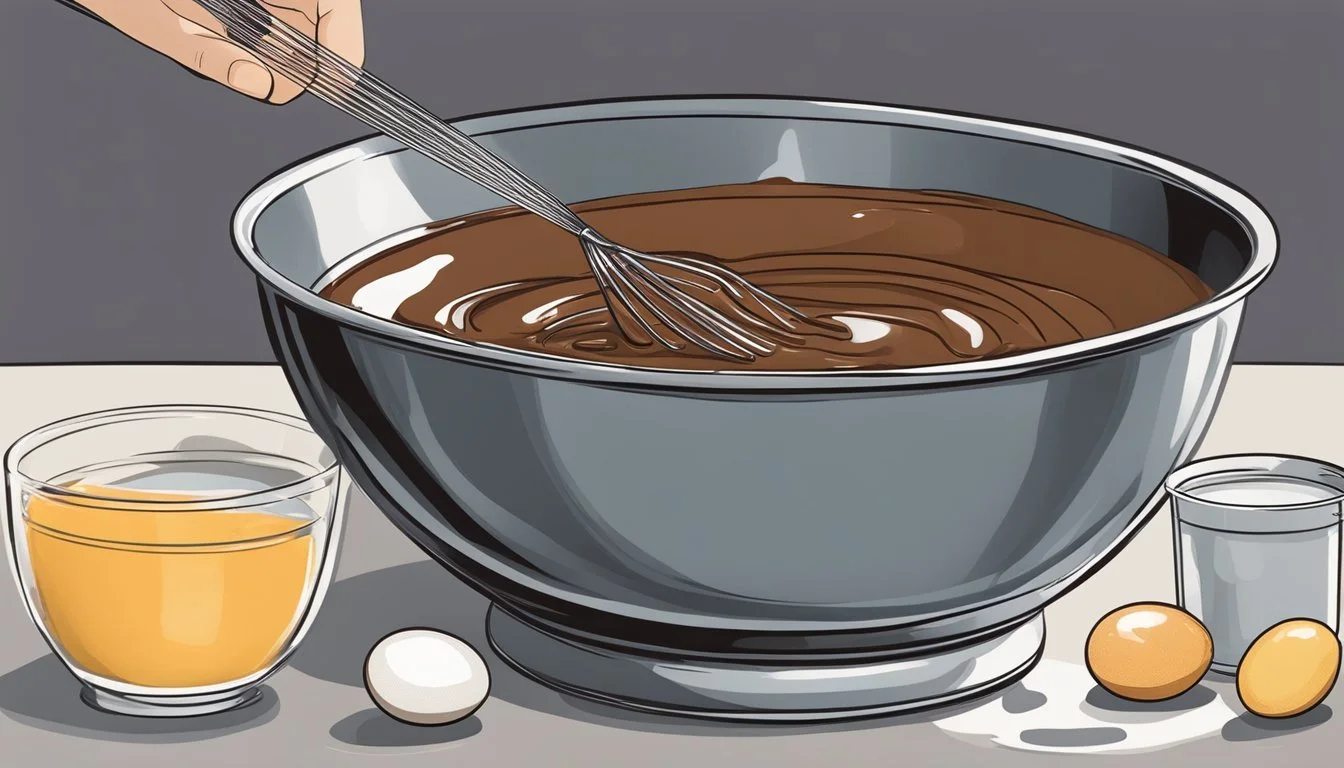How to Make a Texas-Style Chocolate Mousse
A Rich and Silky Delight
Texas has long been renowned for its distinctive culinary traditions, ranging from savory barbecue to sweet pecan pies, and dessert is no exception. A Texas-style chocolate mousse not only satisfies the sweet tooth but also brings a touch of Southern hospitality to the table. This dessert blends a rich, velvety texture with the intense flavor of chocolate (What wine goes well with chocolate?)—a combination that's hard to resist.
Creating a Texas-style chocolate mousse requires a thoughtful balance of ingredients and technique. The process involves carefully melting chocolate, often with a touch of butter for extra smoothness, and then incorporating this with other components to achieve a light yet rich texture. The key to an authentic Texas-style mousse is patience and precision, ensuring that each step enhances the chocolate flavor while maintaining that characteristic airy texture.
While the traditional French chocolate mousse is delicate and airy, a Texas-style mousse takes it a step further by embracing bolder chocolate notes and a creamier consistency, often achieved by incorporating whipped heavy cream. It's the kind of dessert that leaves a lasting impression, rooted in simplicity but elevated by the quality of ingredients and the attention to detail in its preparation.
The Origins of Texas-Style Chocolate Mousse
The Texas-style chocolate mousse is a dessert that draws its inspiration from the deep roots of Southern American cuisine and the rich tradition of chocolate-based desserts (What wine goes well with desserts?) such as the Texas sheet cake. Though the classic chocolate mousse hails from France, with its invention often credited to French post-Impressionist painter Henri Toulouse-Lautrec in the late 19th century, the Texan version represents an American evolution of the dish, tailored to regional tastes and ingredients.
Southern Twist:
In the American South, desserts are not just sweet epilogues to a meal; they reflect an important part of the cultural fabric. Texans have a penchant for bold flavors, so their take on chocolate mousse is no exception. The Texas-style chocolate mousse delivers a robust chocolate experience, often incorporating additional textures and layers that nod to the celebrated Texas sheet cake.
Ingredients and Texture:
Basic Traditional Mousse Texas-Style Adaptation Fine Chocolate Rich Local Chocolates Eggs Farm-Fresh Eggs Sugar Molasses or Brown Sugar Cream Often Whipped to Stiff Peaks
Texan mousse tends to be denser and more substantial than its European counterpart, featuring local chocolate that gives it a distinct taste. The chocolate's richness is balanced against typically larger, airier textures and occasionally, a hint of cinnamon or chili to echo the southern palate.
Evolution into Texan Culture:
As chocolate mousse became assimilated into American cuisine, particularly within the Southern states, the dessert naturally adapted to local tastes. Texas-style chocolate mousse embodies this evolution. It often serves as a celebratory dish on social occasions and family gatherings, upholding the state's reputation for hearty and hospitable cooking traditions.
Essential Ingredients for Authentic Flavor
The success of a Texas-Style Chocolate Mousse lies in two fundamental aspects: exceptional chocolate and meticulously chosen flavor enhancers. These components are pivotal for ensuring an authentic and rich taste.
Selecting the Right Chocolate
Choosing the right chocolate is the cornerstone of an authentic Texas-Style Chocolate Mousse. A high-quality semi-sweet or dark chocolate is essential for a rich and robust flavor profile. Ideally, one should look for chocolate that contains a cocoa percentage of around 60%-70% to strike a balance between bitterness and sweetness. The selection process should prioritize:
Type of Chocolate:
Semi-sweet or dark chocolate, 60%-70% cocoa
Form:
Chocolate bars or chips preferred for even melting
Choosing Flavor Enhancers
Flavor enhancers like vanilla extract, salt, and sugar play instrumental roles in defining the mousse's character. A pure vanilla extract adds depth and aroma, accentuating the chocolate's complex flavors without overpowering it. Meanwhile, a pinch of fine salt can sharpen the overall taste, preventing the mousse from becoming cloying. The sugar should be fine-grained to ensure it dissolves fully, providing sweetness that complements the rich chocolate base. The measured approach to these ingredients includes:
Vanilla Extract:
Pure extract for a subtle, fragrant touch
Salt:
A pinch of fine salt to balance and enhance flavors
Sugar:
Fine-grained sugar to attain a smooth texture without residual grittiness
Careful consideration in selecting these key ingredients will ensure that any Texas-Style Chocolate Mousse has an authentic flavor that pays homage to the classic dessert's indulgent and velvety essence.
Tools and Equipment Needed
Making Texas-style chocolate mousse requires precision and the right tools. Selecting suitable equipment ensures that your mousse has the perfect texture and flavor.
Best Types of Mixing Bowls
The ideal mixing bowls for making chocolate mousse are glass or stainless steel. Glass bowls are non-reactive and allow one to see the mixture from all sides, ensuring thorough mixing. Stainless steel bowls are durable, and their excellent temperature retention is beneficial for keeping ingredients like chocolate at a stable temperature.
Glass Bowls: Non-reactive, microwave-safe if needed.
Stainless Steel Bowls: Durable, great for temperature control.
Saucepan and Heat Considerations
A medium-sized saucepan is essential for preparing ingredients like cream or chocolate that need gentle heat. One should look for a saucepan with a heavy bottom to guarantee even heat distribution and prevent scorching.
Medium Saucepan: Essential for controlled heating of cream and chocolate.
Heavy Bottom: Prevents burning and ensures even cooking.
In creating Texas-style chocolate mousse, a chef might also employ various additional equipment such as a whisk, for aerating mixtures; a spatula, to gently fold ingredients together; a mixer (handheld or stand), particularly useful for beating egg whites to the desired peaks; and possibly a sift to ensure that any dry ingredients like cocoa powder are free from lumps. If the recipe calls for baking elements, one may also need an oven and a half sheet pan or jelly roll pan for any sponge or cake base.
Preparation Techniques
The preparation of a Texas-style chocolate mousse is an art that's rooted in precision. Key techniques include careful melting and cooling of chocolate, strategic combination of ingredients to achieve the perfect consistency, and an exact approach to baking and testing for doneness.
Proper Melting and Cooling of Chocolate
To start, one needs to properly melt and cool the chocolate, which is the heart of a mousse. The chocolate should be broken into small pieces and placed in a warm, but not hot, bowl. It’s essential to melt the chocolate slowly, preferably in a microwave at half power or over a double boiler. Stirring regularly is crucial to prevent the chocolate from burning. Once the chocolate is 75% melted, one should remove it from the heat and let the residual warmth melt the rest. It's important to let the chocolate cool to room temperature before incorporating it with other ingredients to prevent the mixture from seizing.
Combining Ingredients for Optimal Consistency
Achieving a smooth and creamy mousse consistency requires gently folding the melted chocolate with the other components. One should first mix in any dry ingredients like baking soda, ensuring they've been sifted to avoid lumps. If one is to incorporate eggs, they should do so one at a time, ensuring each is fully integrated. Whipped cream is then folded in gradually to maintain the airiness that gives the mousse its texture—vigorous mixing will deflate the mixture and result in a dense texture.
Baking and Testing the Cake’s Doneness
If the recipe calls for baking, preheating the oven is a preliminary step that shouldn’t be skipped. Consistent heat is necessary for even baking. For a typical chocolate cake base, one should sprinkle a thin layer of the mousse on the top, which will bake into the cake providing a rich texture and flavor. Baking times may vary, but a toothpick inserted into the cake’s center should come out clean when it's done. The exact step-by-step instructions should be diligently followed to ensure success. After baking, it’s important to let the cake cool completely before layering or frosting with the mousse.
Assembling the Mousse
When creating a Texas-style chocolate mousse, the assembly process is a delicate balance between maintaining the rich taste of chocolate and achieving a light, airy texture. The two main stages involve creating a flavorful base and then gently incorporating a whipped meringue to provide the characteristic fluffiness of mousse.
Creating the Base
The foundation of a chocolate mousse is a rich, chocolatey base typically consisting of egg yolks and melted chocolate. To begin, one should whisk the egg yolks with sugar until the mixture becomes pale and thick. The next step involves melting high-quality chocolate, allowing it to cool slightly before mixing it with the egg mixture to avoid cooking the yolks. This blending is crucial as it forms the chocolate backbone of the mousse. It's recommended to also add a hint of vanilla or a splash of Texan bourbon for an extra layer of flavor.
Incorporating the Meringue
For the meringue, egg whites are beaten until they form soft peaks, and then sugar is gradually added until stiff peaks are achieved. This meringue is what gives the mousse its lightness and volume. It is crucial to fold the egg whites into the chocolate base gently, maintaining the airiness. One should use a large spoon or spatula to cut down through the mixture, sweep along the bottom, and bring up on the side, turning the bowl gradually. The goal here is to create a uniform mixture without deflating the whipped egg whites.
The resulting blend, a harmonious mix between the weighty chocolate base and the airy meringue, needs to be handled with care. Once combined, the mousse can be spooned into serving dishes and refrigerated to set. Depending on preference, it can be utilized as a standalone dessert or as a decadent frosting for cakes (how long do cakes last?). The final product should be smooth, creamy, with a consistency that's both rich and fluffy.
Styling and Presentation Tips
When serving a Texas-Style Chocolate Mousse, the visual appeal is nearly as important as the taste. Thoughtful presentation transforms this decadent dessert from a mere after-dinner treat to the star of any dining event, be it a casual potluck or an elegant dinner party.
Serving Suggestions
One should consider the vessel in which they serve their mousse. Individual servings in clear glasses showcase the consistency and color, while large, communal bowls echo the generous spirit of Texas. For a creative twist, use small mason jars for a rustic touch, or wine glasses to pair with a sweet dessert port, offering a perfect pairing of flavors.
Casual Settings:
Mason jars
Bamboo bowls
Elegant Dinner Parties:
Wine glasses
Dessert coupes
Garnishing Techniques
A Texas-Style Chocolate Mousse garnish should complement both the flavor and the presentation. Lightly dust with cocoa powder for a classic look, or add a bamboo skewer threaded with marshmallows and a strawberry for a playful touch. To enhance the visual appeal and add a burst of flavor, a dollop of homemade jam works as both garnish and flavor accent.
Garnishes:
Cocoa powder (simple yet sophisticated)
Fresh berries (a burst of color and tartness)
Whipped cream with a sprinkle of cinnamon (for a Texan twist)
Homemade jams, such as peach or berry (a nod to local flavors)
Storage and Freshness
Chocolate mousse is wonderfully rich, and to maintain its freshness and texture, proper cooling and storage are essential. Keeping the dessert moist is key to its enjoyment when served later.
Proper Cooling and Storage
After the mousse has set, one should cover it with plastic wrap to prevent a skin from forming on the surface and to maintain moisture. The plastic wrap should be in direct contact with the mousse. Store it in the refrigerator at a steady temperature of around 4°C (39°F). Homemade chocolate mousse can generally stay fresh for 1 to 2 days.
Do's:
Let the mousse set completely before covering.
Use an airtight container if not using plastic wrap.
Don'ts:
Don't leave the mousse at room temperature for more than 2 hours.
Avoid storing near strong-smelling foods to prevent flavor absorption.
Tips for Reheating and Serving Leftovers
Chocolate mousse is traditionally served chilled and doesn't typically require reheating. However, if it contains elements that may have solidified, gently bring it to an optimal serving temperature by letting it sit out of the fridge for a short period before serving.
For best results:
Remove the mousse from the refrigerator 20 minutes before serving to allow it to reach a creamy consistency.
Avoid microwaving, as this may cause separation and affect texture.
In the end, it’s best to consume chocolate mousse fresh, but proper storage will keep it delicious for later enjoyment.
Nutritional Information
In crafting a Texas-Style Chocolate Mousse, one must consider the nutritional elements that capably affect the diet. The subsections below succinctly detail the mousse's caloric content, serving size, and dietary considerations.
Caloric Content and Serving Size
A typical serving of Texas-Style Chocolate Mousse has a substantial number of calories due to its rich ingredients. A standard serving, which is approximately half a cup, can contain:
Calories: 300-400 kcal
Sugar: 20-30g
Fat: 15-25g
The precise caloric content can vary based on the specific recipe and portion size.
Dietary Consideration
Those with dietary restrictions should note the presence of high sugar and fat levels in a Texas-Style Chocolate Mousse. Modifications can be made for dietary needs as follows:
Reduced sugar: Substitute with a sugar alternative for a lower glycemic index option.
Lower fat: Use lower-fat dairy options or dark chocolate with a higher cocoa content to reduce overall fat.
It is crucial for individuals following a controlled diet to measure ingredients accurately to ensure consistency with their dietary objectives.
Variations and Substitutions
To accommodate dietary preferences and enhance flavors, Texas-style chocolate mousse can be adapted using various substitutions for dairy and gluten or by incorporating nuts and other mix-ins. These modifications are designed to maintain the dessert’s rich texture and indulgence.
Dairy-Free and Gluten-Free Alternatives
For a dairy-free version of chocolate mousse, one can replace heavy cream with coconut cream. Sour cream can be substituted with a dairy-free yogurt for tanginess without the lactose. Ensure that the chocolate used is dairy-free as well.
For those avoiding gluten, it is vital to use gluten-free chocolate and confirm that any additional ingredients such as peanut butter or flavor extracts are certified gluten-free. Unsweetened cocoa powder is naturally gluten-free and adds a robust chocolate flavor without any gluten concerns.
Here is a table summarizing the substitutes:
Dairy Ingredient Dairy-Free Substitute Heavy cream Coconut cream Sour cream Dairy-free yogurt Chocolate Dairy-free chocolate
Adding Nuts and Other Mix-Ins
To incorporate a distinctive Texas flair, add chopped pecans or walnuts to the mousse. These nuts contribute a pleasant crunch and are versatile enough to pair well with chocolate. Ensure they are finely chopped to maintain the smoothness of the mousse.
Bold flavors like peanut butter can also be swirled into the mixture for a nuttier profile. Use natural peanut butter to avoid added sugars and maintain the mousse's balance of flavors.
Here is a list of mix-ins to consider:
Finely chopped pecans or walnuts
A swirl of natural peanut butter
A sprinkle of sea salt on top for contrast
By exploring these variations and substitutions, one can tailor the Texas-style chocolate mousse to various dietary requirements without compromising the rich, decadent experience it's renowned for.
Pairing with Beverages
Selecting the right beverage to accompany a Texas-style chocolate mousse elevates the dessert experience. It involves balancing the richness of the mousse with a drink that complements its deep flavors.
Wine and Dessert Pairings
When it comes to wine, port is a classic choice. Its sweetness and body stand up well to the dense chocolate flavor. For a unique American twist, one might opt for a dessert wine from a local Texan vineyard, which can offer surprising notes that resonate with the mousse's chocolate profile.
Sweet Red Wines:
Essential: Elysium Black Muscat or a Brachetto d'Acqui
Texan Twist: A local Texan Port-style wine
Coffee and After-Dinner Drink Suggestions
For those who prefer a non-alcoholic pairing, coffee is a prime option. A touch of espresso powder in the mousse can be mirrored in the serving by offering a silky espresso or a lavish cappuccino to cut through the sweetness and richness, while complementing the chocolate's roasted notes.
Similarly, after-dinner drinks like an Irish whiskey or a liqueur such as Baileys Irish Cream can mirror the mousse's creamy texture and rich flavor.
Coffees:
Espresso (Plain or with a sprinkle of espresso powder)
Cappuccino
After-Dinner Drinks:
Irish whiskey, neat or on the rocks
Baileys Irish Cream, served chilled
Incorporating these beverage options when serving Texas-style chocolate mousse will undoubtedly enhance the dining experience.
Common Questions and Expert Answers
In this section, the reader will find essential guidance for crafting a Texas-style chocolate mousse, provided through frequently asked questions encountered by first-time bakers and fine-tuned techniques recommended by dessert experts.
FAQs for First-Time Bakers
What type of chocolate is best for Texas-style chocolate mousse?
For a rich, bold flavor, it is recommended to use high-quality dark chocolate with a cocoa content of around 60-70%.Is it difficult to make chocolate mousse?
While making chocolate mousse is straightforward, one must follow the recipe carefully, especially when melting chocolate and folding in egg whites, to ensure a smooth and airy texture.
Expert Tips for Perfecting the Dessert
Achieving the Perfect Consistency:
To ensure your mousse sets properly, experts suggest gently folding in the whipped egg whites or cream, rather than mixing vigorously, to maintain the airiness that is signature to mousse.Flavor Enhancement Techniques:
To elevate the chocolate flavor, one could consider adding a pinch of sea salt or a dash of espresso powder to the mousse mixture. These ingredients subtly enhance the depth of the chocolate without overwhelming the dessert.
By adhering to the guidelines and tips provided, first-time bakers and seasoned chefs alike can confidently approach the art of making a Texas-style chocolate mousse.

